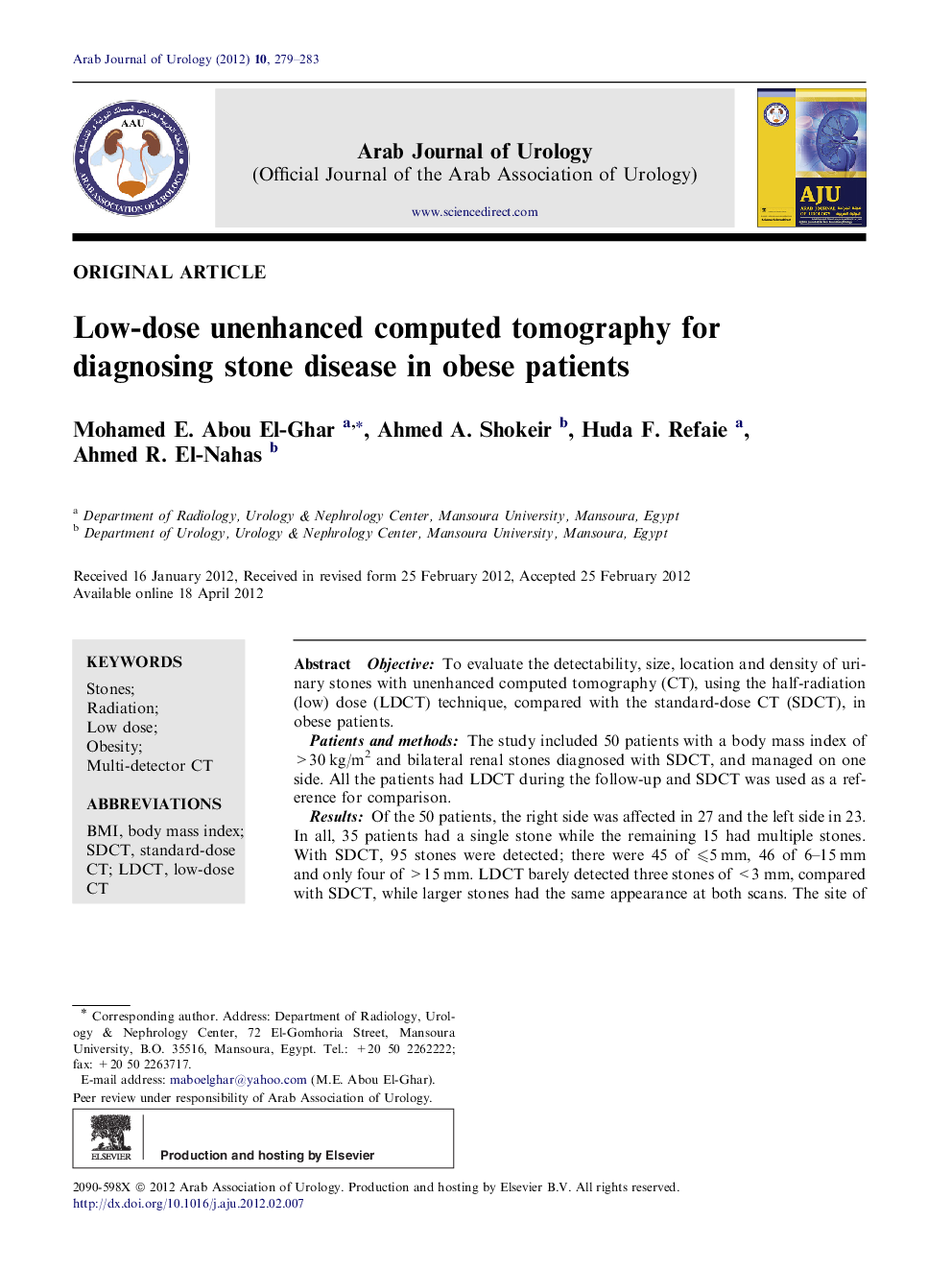| کد مقاله | کد نشریه | سال انتشار | مقاله انگلیسی | نسخه تمام متن |
|---|---|---|---|---|
| 4268157 | 1610745 | 2012 | 5 صفحه PDF | دانلود رایگان |

ObjectiveTo evaluate the detectability, size, location and density of urinary stones with unenhanced computed tomography (CT), using the half-radiation (low) dose (LDCT) technique, compared with the standard-dose CT (SDCT), in obese patients.Patients and methodsThe study included 50 patients with a body mass index of >30 kg/m2 and bilateral renal stones diagnosed with SDCT, and managed on one side. All the patients had LDCT during the follow-up and SDCT was used as a reference for comparison.ResultsOf the 50 patients, the right side was affected in 27 and the left side in 23. In all, 35 patients had a single stone while the remaining 15 had multiple stones. With SDCT, 95 stones were detected; there were 45 of ⩽5 mm, 46 of 6–15 mm and only four of >15 mm. LDCT barely detected three stones of <3 mm, compared with SDCT, while larger stones had the same appearance at both scans. The site of stone in the kidney or the ureter did not affect its detection on LDCT vs. SDCT. The mean stone diameter was identical in both techniques. At LDCT, all stones were detected with no difference in their number, location or density vs. SDCT. However, the tube current and radiation dose were significantly lower with LDCT.ConclusionsIn obese patients with stone disease, LDCT is as accurate as SDCT, while avoiding exposure of the patient to high-dose radiation.
Journal: Arab Journal of Urology - Volume 10, Issue 3, September 2012, Pages 279–283